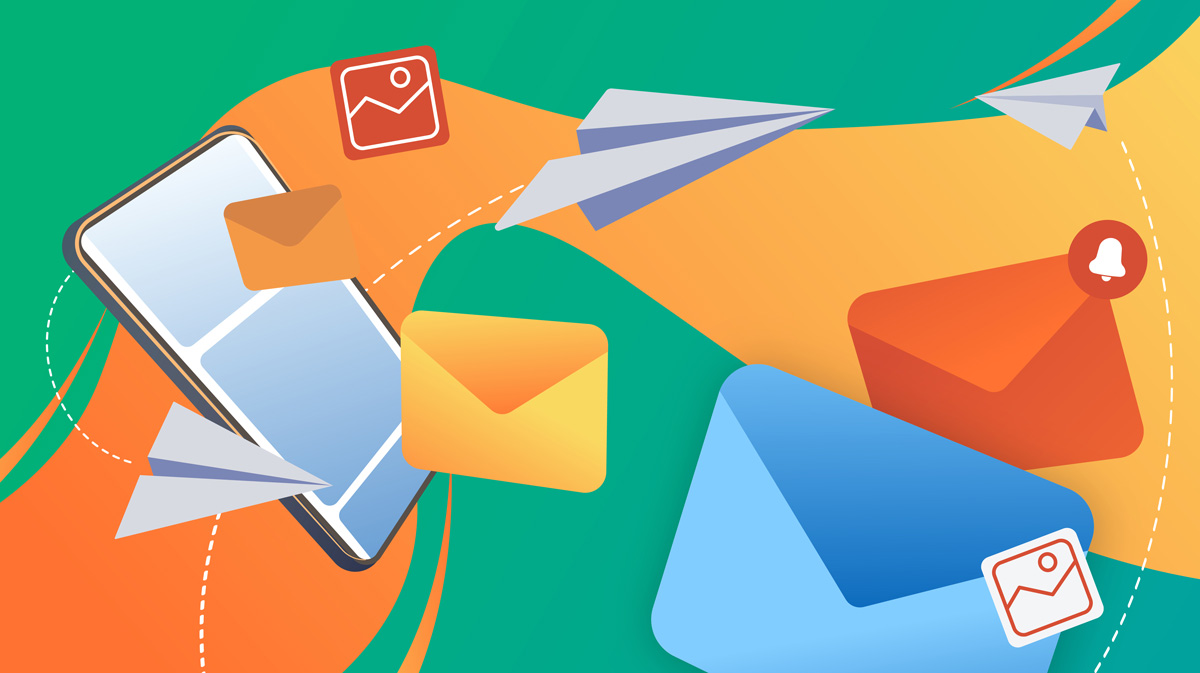e-Blast Off! 7 Reasons Our Developers Use Email Marketing Tools

WANT TO SEE MORE LIKE THIS?
Sign up to receive an alert for our latest articles on design and stuff that makes you go "Hmmm?"
For many of our clients, email is an indispensable marketing tool. While there are many ways to reach your audience, it’s hard to beat delivering your message straight to someone’s inbox. The more complicated part comes when you have to decide how best to format and send your e-blast. Is it okay to just use the email programs like Outlook, Gmail or Apple Mail that you’re used to, or should you try an email marketing tool like Constant Contact, MailChimp, or Campaign Monitor?
What’s the difference, anyway?
To help you decide we talked to our developers, who have plenty of experience formatting and testing newsletters, invitations, internal announcements, and more for our clients. To them, the answer is pretty clear: though less familiar to some, email marketing tools are the way to go.
We’re here to let you in on why our developers say you should always use one of these tools over an email program like Outlook or Gmail:
Sending large-scale emails from an email program can get you in big trouble.
![]()
Yes, you can paste 100 email addresses in the BCC (blind carbon copy) line, but it can cause some serious issues:
- When you send hundreds of emails out together, your Internet Service Provider (ISP) might block your email address, or even list you as a spammer. If this happens, your emails won’t deliver. Worst of all, your ISP likely won’t tell you this has happened, and you won’t even realize there’s been a problem. Before you know it, you’ll be living the life of an internet outlaw.
- As if getting your email address blocked wasn’t enough, your ISP might also blacklist your email server’s IP address. This means that any emails coming from your IP address might be automatically blocked. Even worse, if your email’s IP address is the same as the one for your company’s website, your whole site could go down. All for just trying to send some emails!
- Email marketing tools, called Email Service Providers (ESPs) automatically authenticate your email address (with what is called DomainKeys Identified Mail, DKIM, and Sender Policy Framework (SPF) so that you won’t be mistaken for a scammer and sent to the spam folder. ESPs also allow you to manage your own authentication, so that your local computer geek can ensure that only your domain’s information is in your email header (and not MailChimp’s or Constant Contact’s), making your rate of delivery even greater.
Your email program may fail if you have a large address list.
Even before you get the chance to have your address added to the internet’s version of the no-fly list, your regular email program may just decide to quit from exhaustion. When you try to send a large volume of emails through programs like Outlook or Apple Mail, the program tries to email every address on the list at once. If this list is too large, the program may fail to send your email. What seems like the easiest choice turns into a huge headache.
ESPs avoid this problem by staggering your delivery. While it might take your campaign a little longer to send, this practice guarantees that all of your emails will be delivered, even if you have a long list of recipients.
ESPs track your e-blast’s performance.

Services like MailChimp and Constant Contact automatically analyze statistics for your email, tracking performance indicators like open rate, click rate, unsubscribe rate, and more. With this information, you can make sure your next campaign is as effective as possible.
They make sure you follow the rules.
The CAN-SPAM Act of 2003 set the first national standards for sending commercial emails. Amongst other things, it requires that all email campaigns include a place where readers can opt out of receiving future emails. ESPs automatically ensure that your email complies with these standards, once again saving you from an unintended fate as an internet fugitive.
ESPs save you time (and money).

Is there really much of a difference between laying an email out in a marketing tool versus an email program? Our developers say yes. Typically, it takes a developer much longer to format and test an email if it’s going to be sent through an email program. When you open an HTML email using Outlook, Apple Mail, or Gmail, the program will render the HTML code in its own way. For example, MS Outlook will automatically format the HTML code like Microsoft Word, and your beautifully designed templates won’t display properly. As a result, the developer will have to go through a long process of testing and fixing to rectify the styling issues before your campaign is ready to send out.
Email marketing tools are designed to avoid this frustrating pitfall and will not make any unwanted adjustments to your code, making it much easier to develop and test your email campaign.
Email marketing tools can automatically expand your list and manage it for you, too.
Sending email campaigns through traditional mail programs requires you to manually manage your mailing lists. If your business is sending out newsletters or announcements on a monthly or biweekly basis, this can amount to a lot of tedious work. Marketing tools take this task off of your plate. If any of your users add their emails to a signup form on your website, for example, MailChimp or Constant Contact will automatically update your recipient list. Similarly, if a reader opts out of an email campaign by clicking “unsubscribe,” these tools will remove that address from future emails.
It’s free! Or can be…
Several email marketing tools come with free plans. For example, MailChimp is completely free if you have fewer than 2,000 subscribers and send fewer than 12,000 emails per month.
One last thing…
Before we ever send out an email campaign, our developers send tests through an email marketing software to make sure that the layout is intact, the images show up, and any links are working properly. For increased assurance, our developers sometimes also run the email through an email testing software like Litmus. These programs are specifically designed to catch errors that could cause any of the pitfalls we’ve just described, from a broken link to an incorrect authentication key. With this added measure, your campaign is sure to reach as many inboxes as possible and provide you with the best results.
Email is a staple of many businesses’ marketing strategies. ESPs can help avoid the pitfalls and headaches that might be inflicted by sending mass emails through a more familiar email program and can even increase the scope and success of your campaign.
We often consult with our partners to help set up their Email Service provider, as well as design, develop, and optimize their emails. If you’re interested in sending out an email campaign, get in touch—we’d love to help!
Our experienced developers at Glantz are here to guide you through the building and testing process and make sure that your newsletter, announcement, or invitation is delivered without a hitch.

